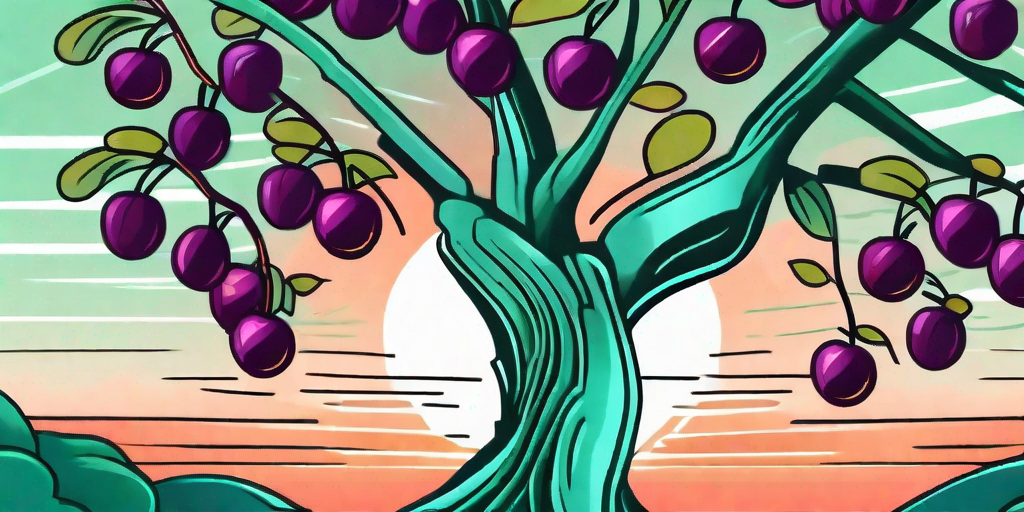
Ah, the humble plum tree. A provider of succulent fruits, a beacon of natural beauty, and a test of your patience when it comes to pruning. But fear not, dear reader, for this guide will transform you from a tentative trimmer into a confident cultivator. So, let's dive into the world of plum tree pruning, shall we?
Understanding the Art of Pruning
Pruning is not just about hacking away at your tree with wild abandon. Oh no, it's a delicate dance between you and your tree, a conversation if you will. It's about understanding the tree's needs, its growth patterns, and how to guide it towards a fruitful future.
But why prune, you ask? Well, pruning helps to maintain the tree's overall health, improve fruit quality and yield, and control its size and shape. Plus, it's a great way to show your tree some love and care. After all, who doesn't enjoy a good haircut?
The Right Time to Prune
Timing is everything when it comes to pruning. Prune too early, and you risk exposing your tree to harsh winter conditions. Prune too late, and you may interfere with its budding process. The sweet spot? Late winter or early spring, just before the new growth starts. This period allows for optimal healing of the cuts and minimizes the risk of disease transmission.
However, if your tree is a bit of a rebel and prefers to bloom early, you might need to adjust your pruning schedule. In this case, prune as soon as the flowers start to fade to avoid disrupting the fruiting process.
The Pruning Process: A Step-by-Step Guide
Now that we've covered the why and when, let's move on to the how. Grab your pruning shears, put on your gardening gloves, and let's get down to business.
Step 1: Assess Your Tree
Before you start, take a moment to admire your tree. Look for any signs of disease, dead or broken branches, and areas of overcrowding. These are the first things you'll want to tackle in your pruning session.
Also, keep an eye out for the tree's natural shape. Plum trees are like snowflakes, each one is unique. Try to maintain its natural form as much as possible to ensure a healthy and happy tree.
Step 2: Make the Cut
Now, it's time to make the cut. Start by removing any diseased, dead, or broken branches. Make sure to cut at a 45-degree angle, about 1/4 inch above a bud that is facing the outside of the tree. This encourages outward growth and prevents water from settling on the cut surface.
Next, thin out any overcrowded areas to improve air circulation and light penetration. Remember, your tree needs to breathe and soak up the sun to produce those juicy plums. So, don't be shy to remove any branches that are crossing, rubbing against each other, or growing towards the center of the tree.
Post-Pruning Care
After a good pruning session, your tree might look a bit bare and vulnerable. But don't worry, it's all part of the process. With some post-pruning care, your tree will bounce back in no time.
Watering and Fertilizing
Just like us after a tough workout, your tree needs to hydrate and replenish its nutrients after pruning. Water it thoroughly and apply a balanced fertilizer to support its recovery and growth.
However, be careful not to overdo it. Too much water or fertilizer can lead to excessive growth, which might require additional pruning. Remember, moderation is key.
Protecting the Cuts
Pruning cuts can be an open invitation for pests and diseases. To protect your tree, consider applying a tree wound dressing or pruning sealer. These products create a barrier that helps to prevent infection and promote healing.
However, not all trees need this extra protection. In fact, some studies suggest that wound dressings can sometimes slow down the healing process. So, do your research and consult with a local arborist if you're unsure.
Frequently Asked Questions
Can I prune my plum tree in the summer?
While it's generally recommended to prune in late winter or early spring, a light summer pruning can be beneficial in certain cases. For instance, if you notice any diseased or damaged branches, it's best to remove them as soon as possible to prevent further spread. Just remember to keep the summer pruning to a minimum to avoid stressing the tree during its fruiting period.
How often should I prune my plum tree?
Most plum trees need a good pruning session once a year. However, younger trees might require more frequent pruning to establish a strong structure. On the other hand, older trees might need less frequent but more intensive pruning to rejuvenate their growth.
In Conclusion
Pruning your plum tree might seem like a daunting task, but with a bit of knowledge and practice, it can become a rewarding part of your gardening routine. So, don your gardening gloves, wield your pruning shears, and show your plum tree some love. Here's to a bountiful harvest!
Remember, every tree is unique, and what works for one might not work for another. So, keep learning, keep experimenting, and most importantly, keep enjoying the process. Happy pruning!











